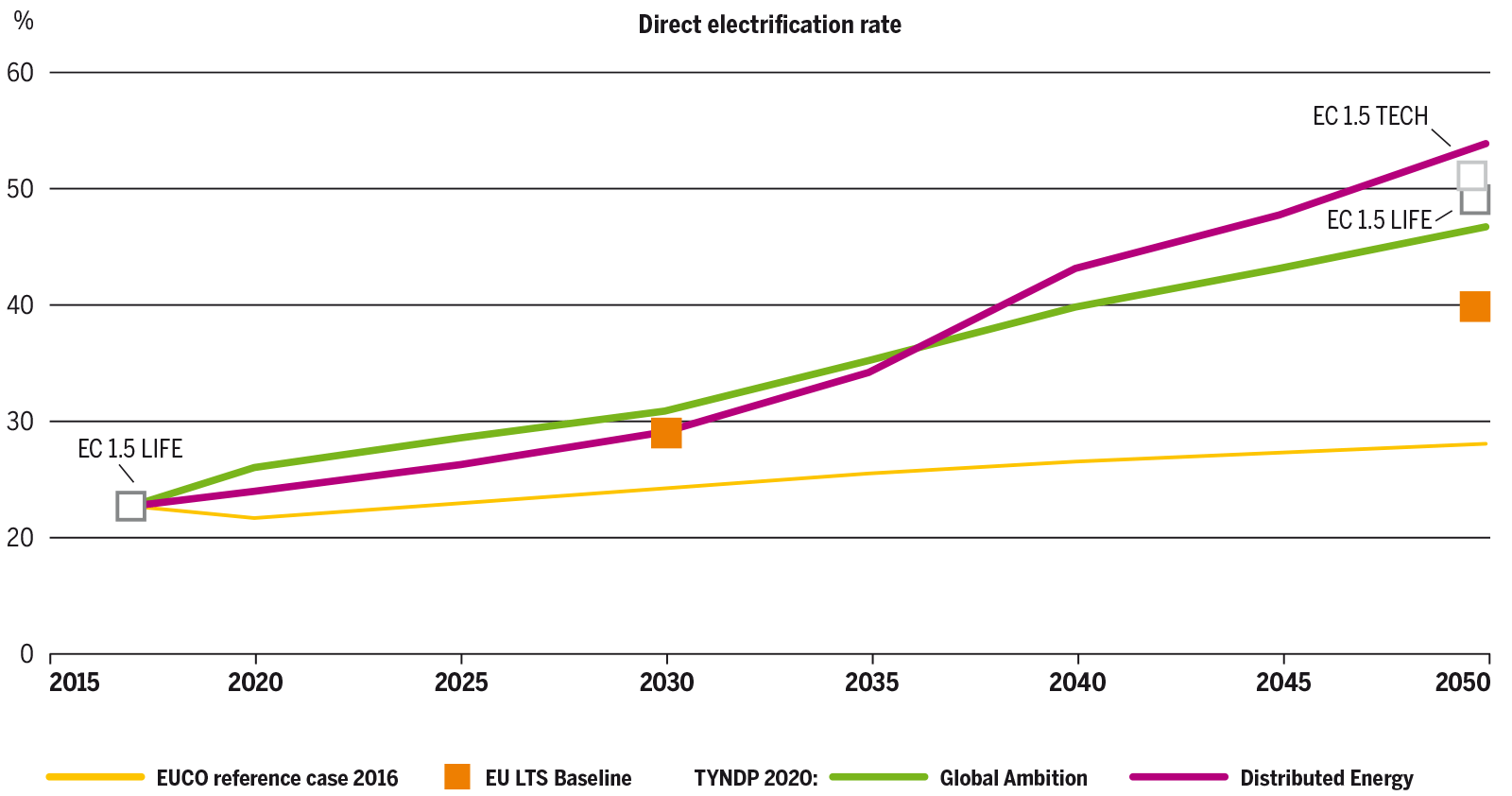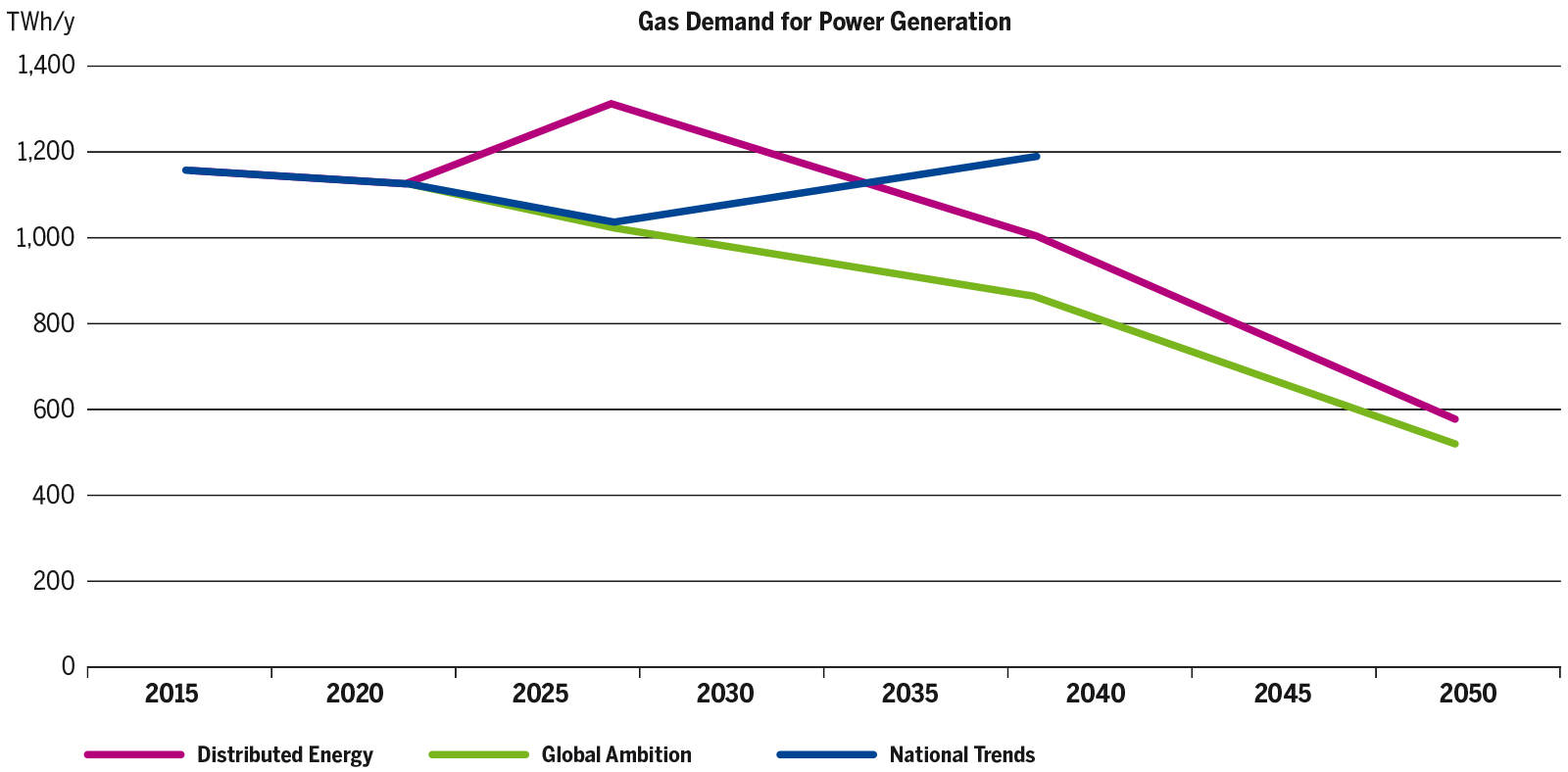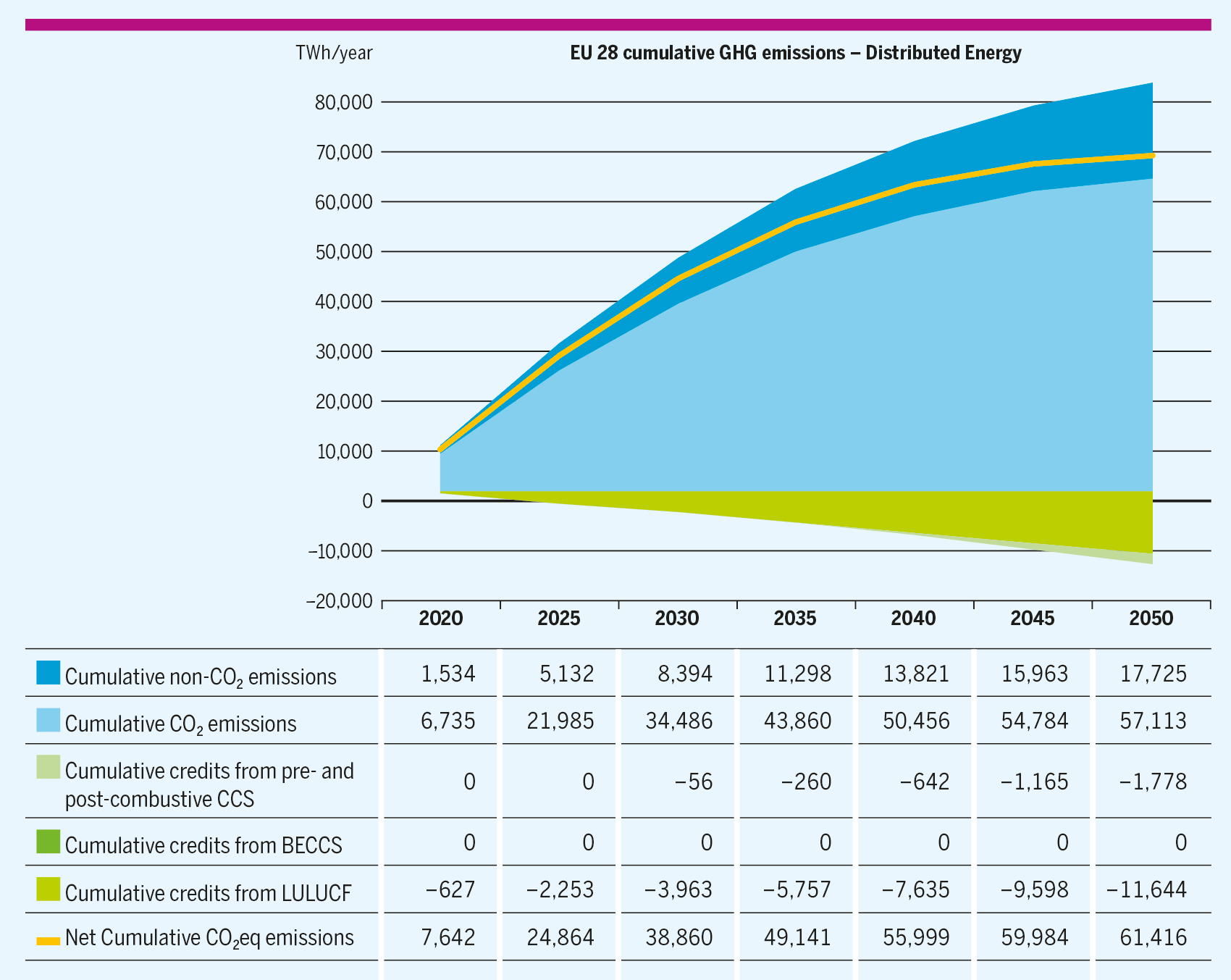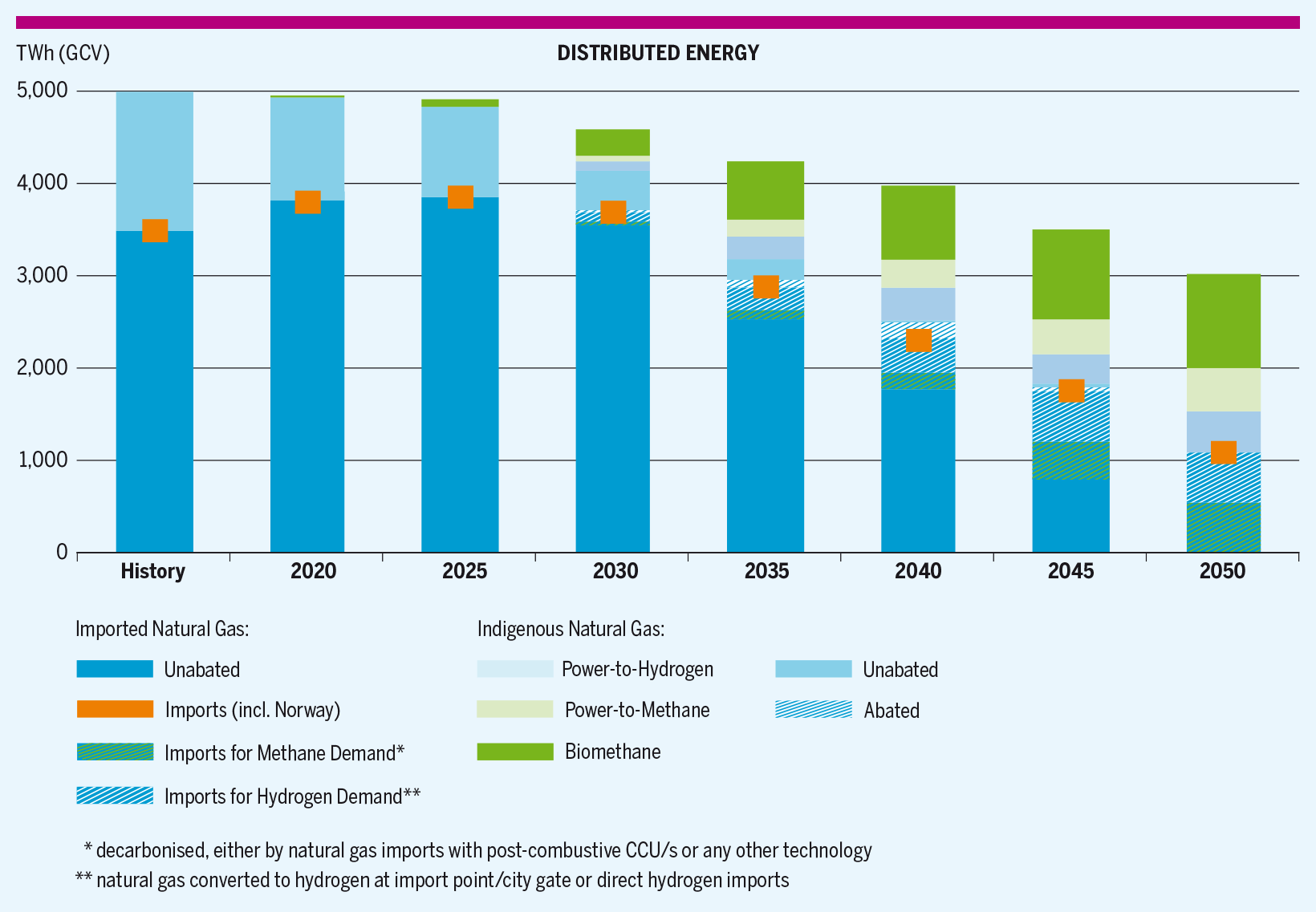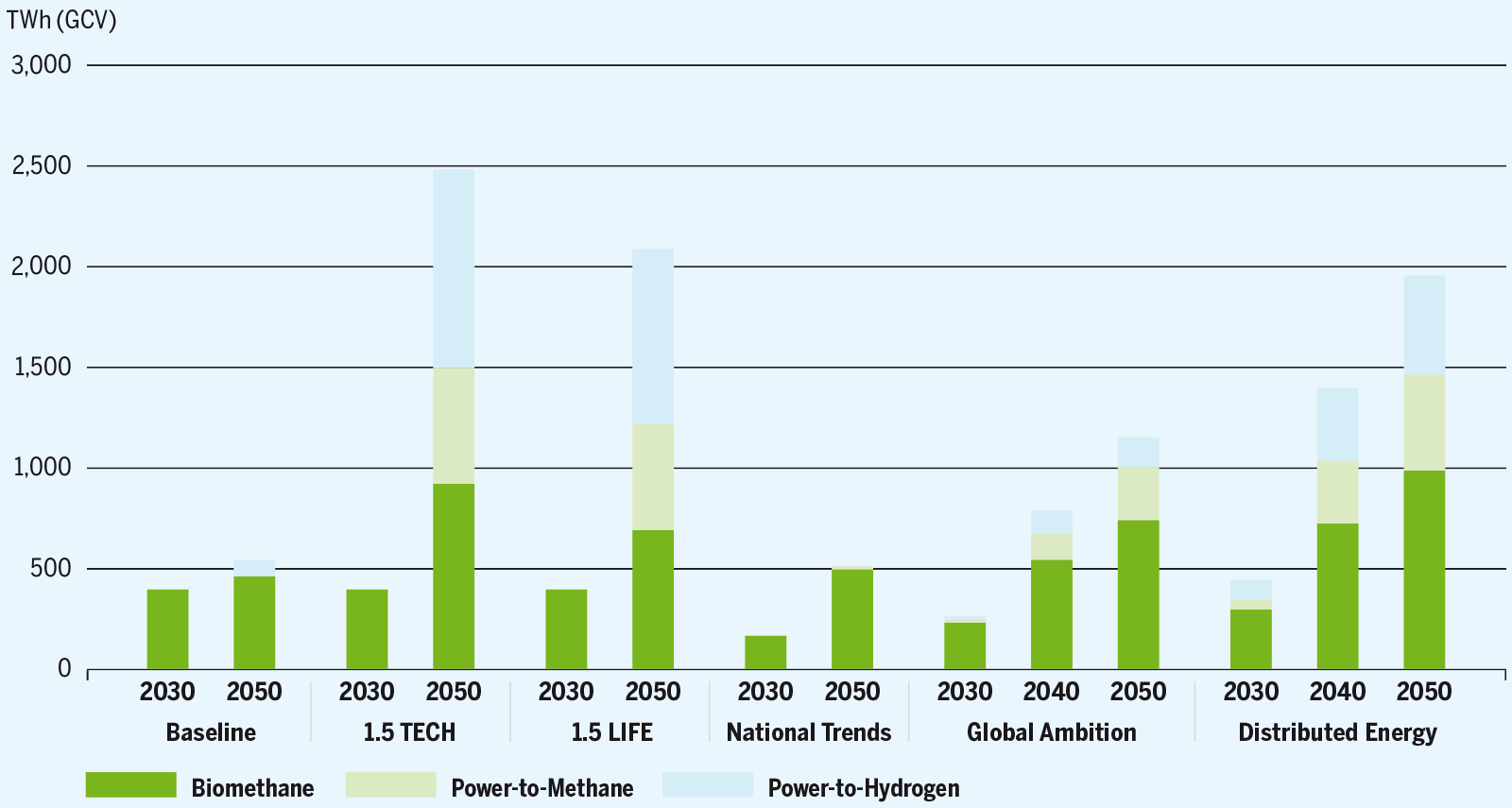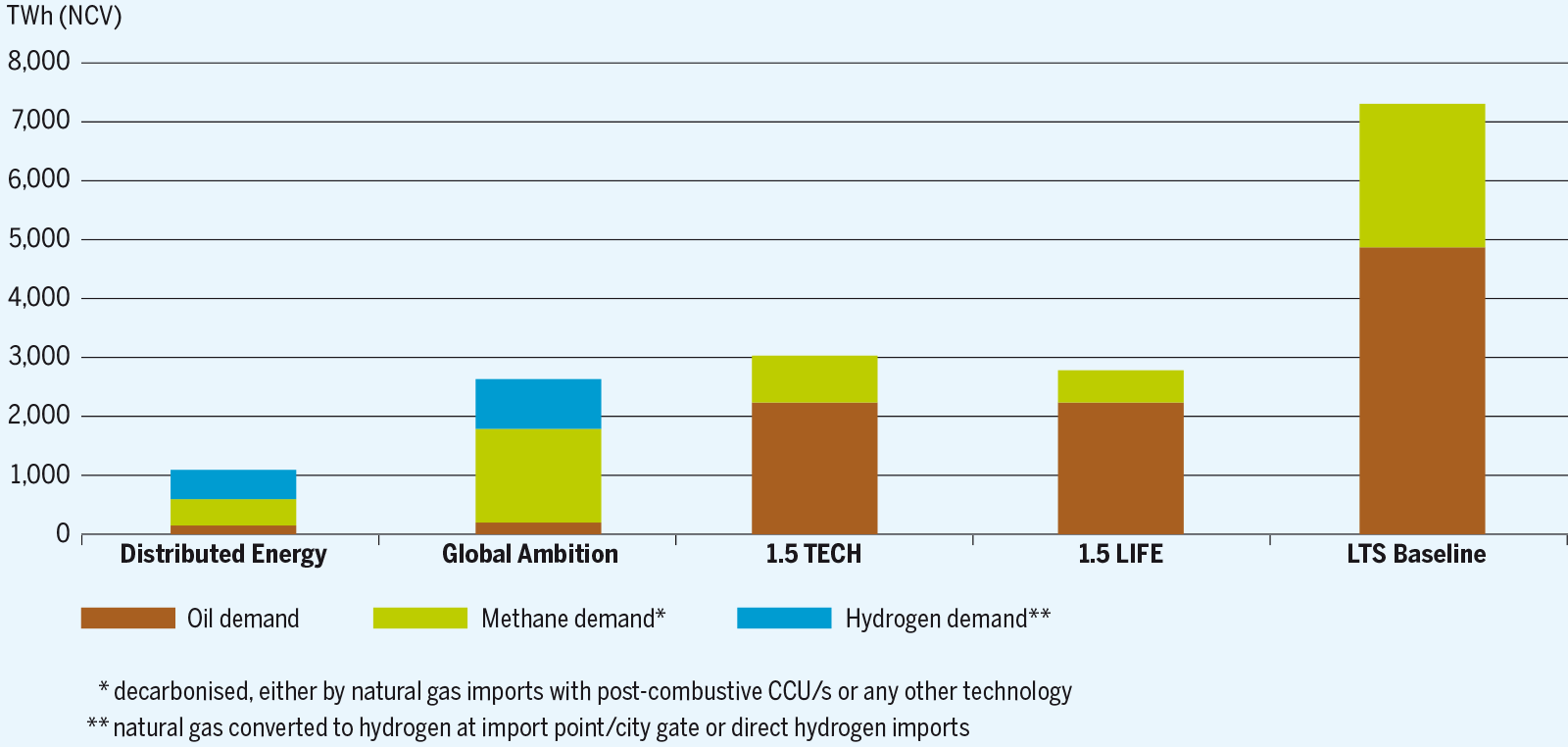2 The future role of gas
2.1Gas and electricity need each other
Gas and electricity rely on each other to achieve full decarbonisation
TYNDP 2020 scenarios show that power-to-gas is a key technology to integrate electricity from variable renewables to a larger scale. Power-to-gas supports the development of variable renewables, like wind and solar, since it allows to produce hydrogen when the electricity demand is lower than the renewable electricity production. Furthermore, biomethane and hydrogen produced from renewable electricity can be stored in the gas system for longer period and transported efficiently over longer distances, complementing the short term flexibility of battery storage.
Equally, the gas system needs all decarbonisation technologies, including power-to-gas, to further decarbonise the gas supply, which can in return be used to produce decarbonised electricity when the electricity demand is higher than the renewable electricity generation.
Higher electrification comes with higher gas demand for power generation
All TYNDP 2020 scenarios consider a significant progress of the electricity demand in line with the European Commission’s Long-Term Strategy1. The development of electricity demand together with development of variable renewable generation from wind and solar requires reliable gas back up for power generation. Furthermore, with higher electrification, the electricity demand becomes more seasonal and temperature-dependent, therefore, during dark, cold and shorter days in winter with limited wind generation, the electricity system requires back-up capacities which can cope with long periods of limited variable renewable generation. Therefore, higher development of electrificiation comes with higher gas demand for power generation, and also with additional stress on the gas system, which is assessed under the 2-week dunkelflaute2 cases.
1 https://ec.europa.eu/clima/policies/strategies/2050_en
2 2-week period with minimum variable renewable power generation from wind and solar.
Figure 9: Direct electrification rate in TYNDP 2020 scenarios
Figure 10: Gas demand for power generation in TYNDP 2020 scenarios
2.2All technologies are needed: renewables, decarbonisation and CO₂ capture
TYNDP 2020 scenarios confirm that a net-zero EU can be reached by 2050 within a budget of ca 63 MtCO₂ emitted along the course. However, it requires the combined development of the various technologies to increase the renewable energy production as well as decarbonising currently available energy sources. Furthermore, the definition of a carbon budget for the EU would require further CO₂ reduction after 2050, reinforcing the need for carbon capture and sequestration (CCS) technologies.
This is reflected in the gas composition of the COP 21 scenarios, Distributed Energy and Global Ambition, developed by ENTSOG and ENTSO-E where the development of renewable gases such as biomethane and hydrogen from power-to-gas needs to be complemented with decarbonised gas to reach the carbon neutrality of the gas mix by 2050.
Figure 11: EU28 Cumulative emissions in MtCO₂ – Distributed Energy scenario
Figure 12: Gas mix composition – Distributed Energy scenario
2.3Quick means cheaper
Quick wins are essentials
Some quick wins like coal-to-gas switch in power generation can come at no cost. However, the large scale deployment of energy efficiency solutions or renewable and decarbonisation technologies require further investment.
Global warming depends on the quantity of greenhouse gases released in the atmosphere. Therefore, limiting the global warming to 1.5 °C requires to reach carbon neutrality, but equally to limit the amount of CO₂ that will be released in the meantime. Also, a quick transition will require limited additional investment in “negative emissions” technologies whereas a late transition towards carbon neutrality will require larger investments to capture the additional CO₂ that will be emitted.
2.4Gas to support the energy independence of Europe
Gas can displace coal and oil in many sectors and still reduce the overall energy dependence of the EU
Europe can reduce its dependence to energy imports by further improving its energy efficiency and developing renewable electricity and gas capacities. Both COP 21 scenarios show that electrification together with the penetration of gas in energy intensive sectors such as industry and transport, can reduce the energy dependence of the EU even further down compared to the EC Long-Term Strategy scenarios.


